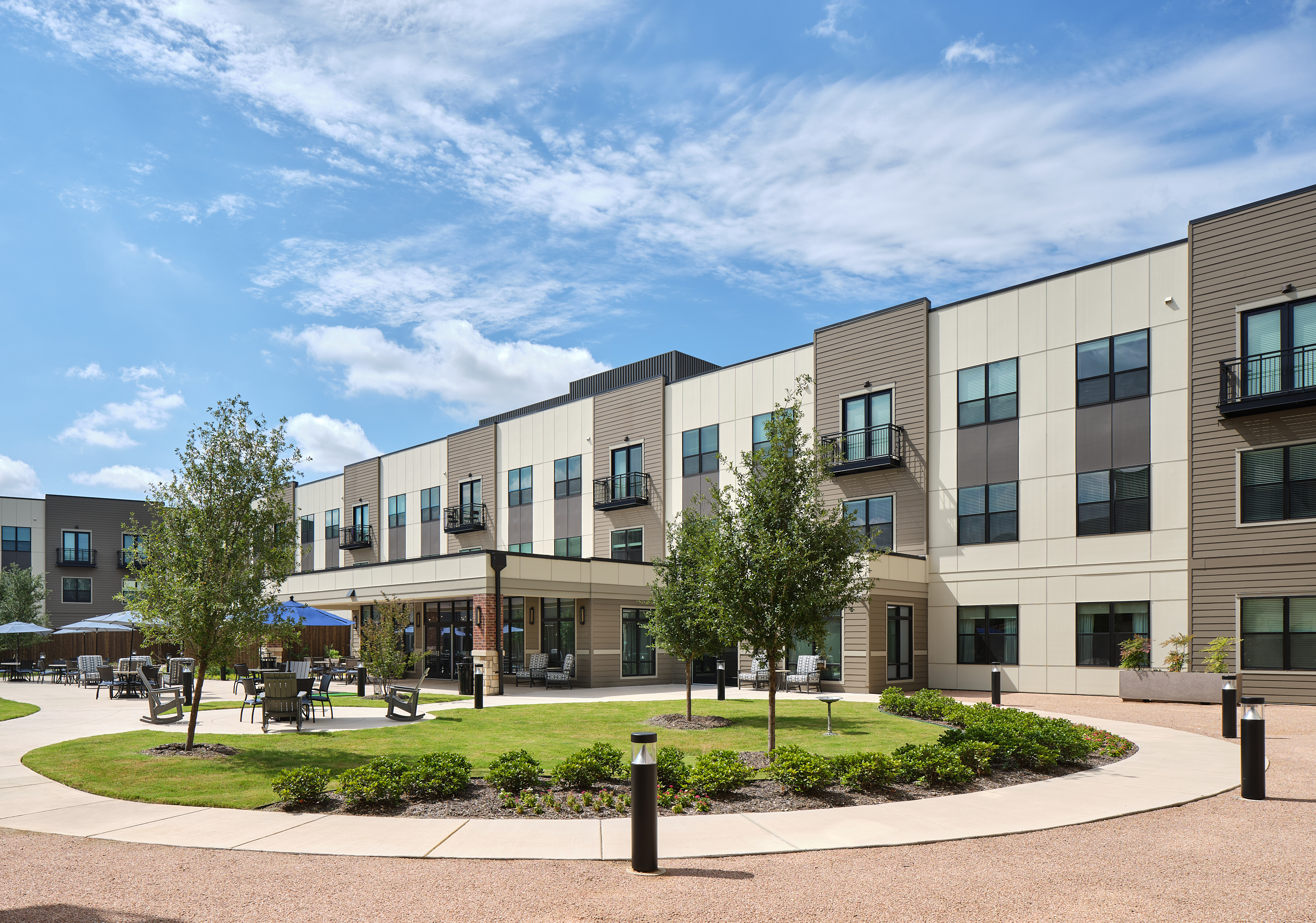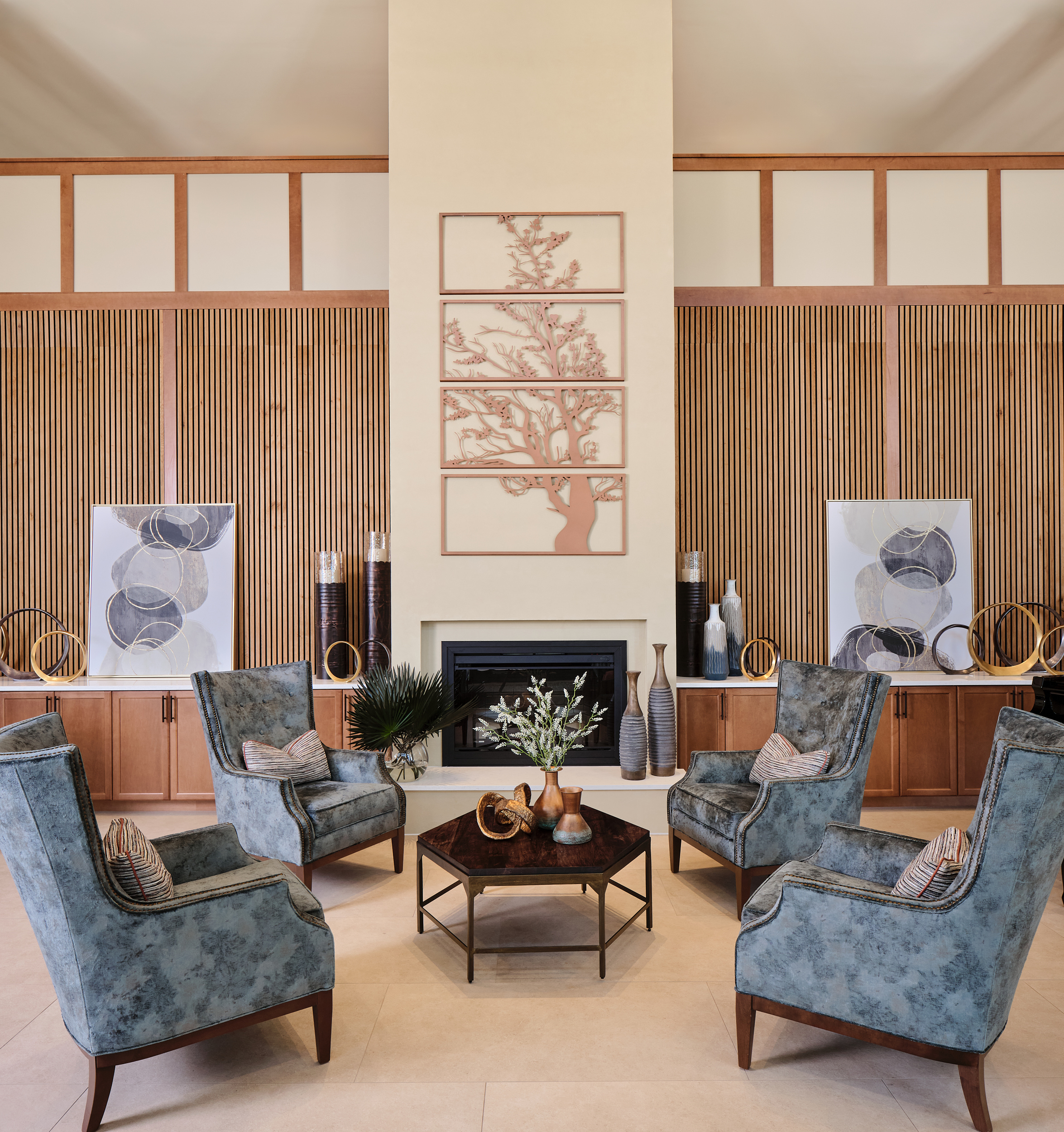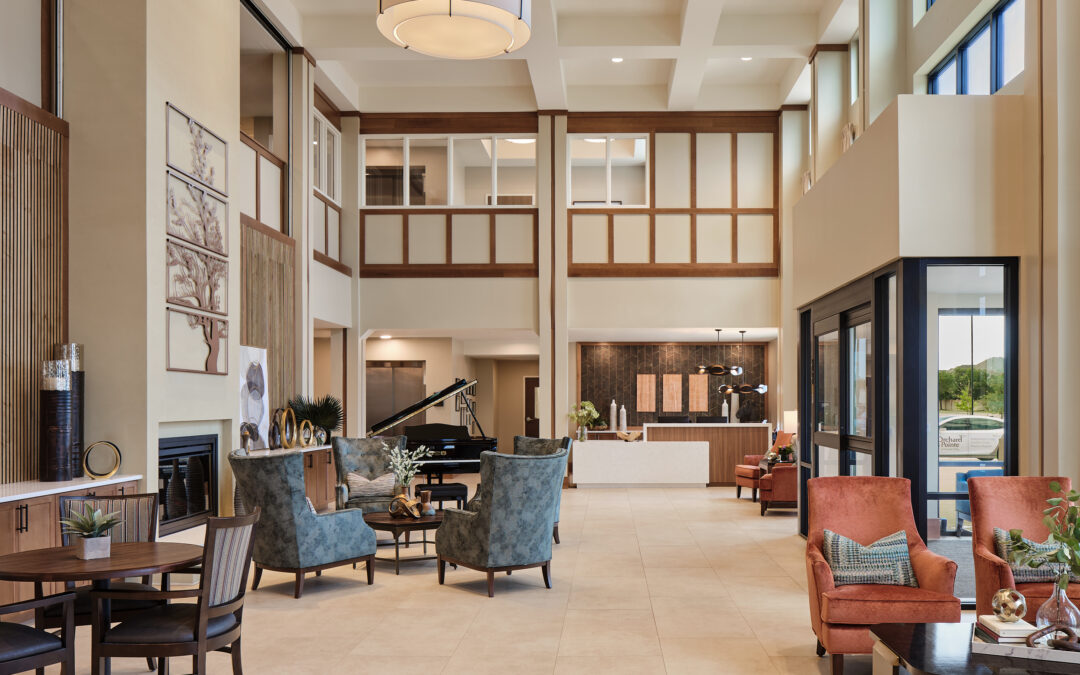A New Twist in Senior-Living: Full-Service Residential Center for Seniors and their Caregivers
Completion Year: 2023
Location: Carrollton, TX
Project Type: New Construction
Care Type: Independent Living, Assisted Living, Memory Care, Respite Care
Capacity: 140-units
- Design-Build
- Market Intelligence
- Interior Design
- Technology Design
- Foodservice Design
- Equipment Management
- FF&E Procurement & Installation
That’s the concept behind Orchard Pointe at Creek Valley, a groundbreaking, care-based housing community for retired adults in Carrollton, TX.
Carrollton’s Orchard Pointe at Creek Valley, a unique Senior Living Heritage Community, provides housing for older adults with personalized care services in their apartments. This pioneering approach allows couples living in Independent Living who may require varying levels of care to stay together in their existing apartments instead of moving to a different level of care in the community.
The key goal has garnered winning results: To create inventive Independent Living inspired by increased longevity and the growing needs of the aging population.

At a time when there is a rising shortage of affordable housing for older adults,1 increased social isolation and high caregiver turnover rates, Orchard Pointe at Creek Valley’s housing model is a unique solution for these challenges.
“What makes our brand-new Senior Living community unique is that residents can receive personalized care in their existing apartment,” says Wesley Helms, Executive Director of Orchard Pointe at Creek Valley. “The team at Direct Supply® Aptura® listened and worked very closely with us to envision how we can accomplish this by constructing a caregiver’s room and medical rooms on the Independent Living floor, allowing couples with varying levels of care to stay together in their apartments. The apartments all have their own washer, dryer and kitchens.”
The three-story building, located in suburban Dallas, is designed to encourage residents to socialize. While each of the apartments have a small kitchen, there is a bistro and a large space, restaurant-style dining area where residents can eat together.
With the goal to expand their Senior Living communities to Texas from Nebraska, Heritage Communities determined they needed a trusted partner with a proven Senior Living track record, but also one that understood the regulations and restrictions of each state.
Blending Modern Texas Aesthetics with Senior Living Practicality
The design process began with understanding the unique features of the chosen site and recognizing the building would be visible from a major road and adjacent to residential developments – both multi-family and single-family homes, The design exterior and interior were updated and modernized to be harmonious with the surrounding Texas community. The result: a welcoming atmosphere with high ceilings and lots of natural light. The Texan décor leans heavily on using natural materials like mid-toned wood on floors, walls and for resident room entryways. This creates and overall familiar feeling carried throughout in artwork, pictures of trees, the Dallas Cowboys and Willie Nelson, and the catchy names like the Bluebonnets Bistro and the Texas Dolly’s Game Room.”

Creating Connection and a Haven for Active Senior Lifestyles
The open, community-gathering design is focused on fostering social connections, promoting quality of life and helping older adults live their lives to the fullest, connected to their loved ones and the larger Carrollton, TX community. The two-story lobby opens to the “there is something for every resident here,” energy connecting directly to a day-to-night bistro where residents can grab breakfast or read the newspaper. It connects to the main dining room and living room, where a piano, fireplace and waterfall bring the charm of the outdoors inside and promote connection and gathering.
There’s plenty of fun lifestyle features including a spa where residents can get massages, a salon where they can get their hair and nails done and a fitness center, which buzzes with yoga classes. Other lifestyle features include an action station/server kitchen (providing home-like meals) in the dining room. There, residents can experience the chef whipping up culinary creations. There’s a library, a two-sided dining room and bistro for casual and more formal dining, a theater with three big screen TVs (and popcorn machines) and a great room with intimate seating areas, shuffle board table and tables for resident and family and guest activities.
New, out-of-the-box solutions were developed as the pandemic progressed. As supplies and labor grew short, the design team faced a difficult question: How could they install a structural system when contractors became increasingly harder to find and prices skyrocketed?
Aptura’s construction team, led by Andy Ostrand, Senior Director of Construction, found a unique answer: a pre-manufactured steel system that could be built in a factory and brought to the site, reducing staffing needs and cost at the same time.
“When Covid hit, the building was already designed, budgeted and contracted for,” said Ostrand. “During that time, prices skyrocketed and affected the community’s budget. There were a limited number of things we could do to adjust during the pandemic, but our team was upfront about the pricing and transparent about our options. We never stopped communicating during Covid, working remote through video calls. We were cost conscious throughout the whole project and got it back on track despite pandemic challenges.”



The Results: A New Aging-in-Place Community Built on Trust, Experience, and Partnership
“We were able to bring Heritage Communities’ vision to life through all phases of the project: programming, design, approvals, bidding and construction,” said Gaurie Rodman, Vice President of Real Estate Strategy and Development for Aptura. “The combination of the Aptura teams’ industry expertise and our long-term partnership with Heritage brought the best out of all of us to create this successful project.”
Helms applauds the advantages of having older couples continue to live together, versus being separated because of changing care needs and having to move to other levels of care in the community: “It creates closer, more familial relationships and therefore enriches the caregiving experience on both sides. It’s far less disruptive.”

